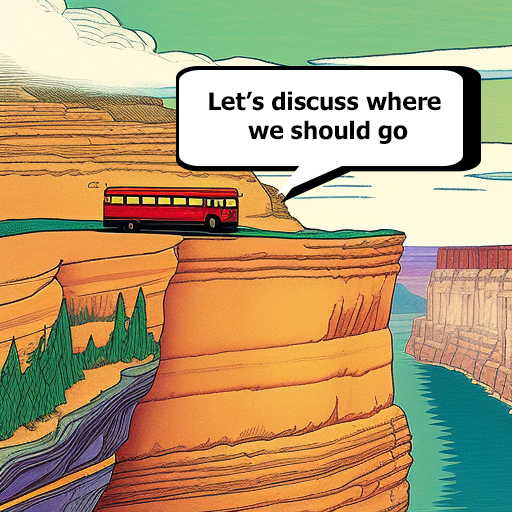At the end of my last vacation, I had a situation in the plane, that normally doesn’t and shouldn’t happen. A passenger in the plane became scared and didn’t want to continue, he didn’t even want to sit down. After trying, in the end, the pilot decided to turn back and let the passenger off. If you would ask the people on the plane or even the pilot what they wanted, I do not think a lot of people would have said: I want the plane to turn around and let the passenger off. What you would have heard is “I want to catch my connection”, “I want that person to sit down”, and “I want to go home”. Does that make the decision wrong? No, while it is not what people wanted, most people on the plane would have known turning back was the right decision. No matter what they wanted.
This is a bit of an extreme example. But I hope this already is a start in making my point. If you ask people what they want, they give you their hopes, their dreams, their ideal situation. They will often not take into consideration what is possible, how it will affect others, and a lot of other factors. Neither will they always know what they really want. People on the plane might have said: “I want to catch my connection.” But what when the pilot would have flown with a passenger not in the seat, standing in the plane? Or being constrained in the seat by other people or by ropes? Because in reality most people also want safety and decent treatment of people.
While we often feel like it, it is not your job to make yourself happy, to make your manager happy, or to make your colleagues happy. It is your job to try and make the best decisions. And the best decisions most of the time do not make everyone happy. It is your job to try and get the best result. And the best result is most of the time achieved by also doing stuff you do not like and/or another person will not like.
While Agile is always about listening to people, Agile doesn’t change this. Listening to what people want is important. But it is also important to understand when what they want is not what you should give them.
When should you not give them what they want? When what they want creates the perfect environment for them, that probably means, someone else will suffer for it. When what they want is unrealistic, going for something that cannot be achieved will not help them. When what they want is a short-term goal, they might forget to look at what they want in the long term.
The last one might need some explanation. So let me take my experience as a tester. Keeping the deadline is something that is often wanted. I think there is no tester that hasn’t wrestled with that one at a certain moment. So, when this goal is made important, testing is shortened or even skipped. In reality, what most companies want, is a satisfied customer. And they want to achieve that by keeping the deadline. So when the product is brought into production and then it is not usable, because of bugs……. That does not make the customer happy.
So, how do I handle a situation like that? Well, as a tester I write a report. In that report, I write down the risk of shortening tests or even skipping them. What kind of bugs will be missed, what will happen in production if they occur, and how big is the chance of it happening? And yes, sometimes they still decide to keep the deadline. But very often they decide to extend it because that is what will keep the customer the most happy in the long run. Even if it means making the customer not happy in the moment.
Agile is knowing what people want, long term and short term. Agile is knowing what your colleagues want, your manager wants, your customer wants, and what you want. Agile is using all that information, both short-term and long-term, from all those people and trying to make the best decision. And then afterward evaluating if it brought you as a team and a company closer to what you want or not. What you want should be a reference point, not a must.

